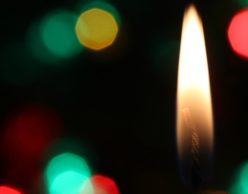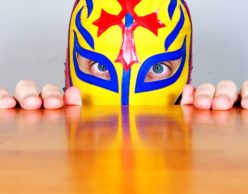
We feel tremendous joy at Mash-Up HQ, joy that is equal only, at times like now, to our anger. But most important about our joy and anger is that they both continually fuel our life’s work: To celebrate and support Mash-Up America, and to fight to support all of our humanity and dignity. Here, Mash-Up Co-founder Amy S. Choi tackles her own rage, and the delicate dance between rage and gratitude for this country we call home. Remember: You are here, and we are here with you.
Rage is a confounding sensation.
I experience it physically. It crawls in my body, but seems to have no starting point. It has no parallels. It isn’t like pain. I’ve tried to trace it back to its origins, like I can do with pain. It isn’t, say, a fist in the base of my spine, like the pain that grows out of my two misplaced disks. That pain, when unchecked, blooms from my right hip in a fat oval across my lower back, then snakes up, until I can’t tell if the pain is actually in my back or buried in my shoulder blades, stretching backwards from my chest. After conquering my shoulders, my pain pivots, and shoots down my right butt cheek. My butt throbs, and not in a fun way. The pain swims down my right leg. My spinal doctor calls this radiating.
My rage doesn’t radiate. It’s more like a fever, but instead of wilting my body, it springs it alive. Rage starts to prickle at my skin. It’s hungry and greedy. It makes me hyperaware. I start to breathe heavier. I literally become hot and heavy. My rage is almost like desire, but instead of that rising craving pulse of need, that chest tightening and little ticking gasp of imagination, the rage is my need. It desires only more of itself. My forearms twitch. My legs feel warm. My skin sometimes feels like it will split from the rage ballooning inside.
I am the Yellow Hulk.
I feel rage all the time. I am also an upper-middle-class Korean-American married mom of two toddlers in bougie brownstone Brooklyn. I have a biracial marriage and mixed Korean-Colombian-Mexican brown kids and a trilingual family and run in a crowd where such things are prized. I am the Yellow Hulk of well-behaved, thousand-dollar-birthday-party-having, white-people-feeling-guilty-about-private-school, organic-unbleached-diaper-buying rage.
I’m not supposed to be this way. There are some ways that in America, as a successful Asian woman with immigrant parents, I’m supposed to be.
The things that I am supposed to be:
Grateful.
Good.
Things that I am not supposed to be:
Ungrateful.
Enraged.
Maybe I can break it down further. The things that I am supposed to be:
Grateful. To this benevolent country, which opened its arms to my parents to take full advantage of the opportunities and meritocracy abundant here, allowing me to flourish and be raised in an upper-middle-class world with the best schools and universities at my fingertips and to eventually do important things. Like tell stories for a living, particularly the one that celebrates this Great American Story.
Overachieving. But not in a threatening way, in the expected Asian one, in which I am smart and get straight A’s and play an instrument and go to the Ivy League and get a high-paying, prestigious job, though not as a boss. As a great employee. I’m not supposed to have too many opinions or be overly intellectual, certainly not in a way that questions or challenges the American social and political status quo. Because what kind of person shows their gratitude by challenging the very country that gave her so much? That is not part of the Story.
Sexy. Even sensual, and subtly dominant, but never sexy in the way that prioritizes my personal satisfaction over that of my man (and it should always be a man!). Never tacky. Never casual. Submissive isn’t necessary to Asian American female sexiness; but obliging is.
Sacrificing. In the Story in which I belong, my parents sacrificed to come here, raise me right, and pay for my schools. They, too, are not supposed to have flaws or desires or rage at the indignity of the racism they faced, only gratitude that they got to sacrifice so much for me. I, too, am supposed to sacrifice, for my kids, who are the third chapter of our Great American Story. This Story gave me everything I have, because I was the right kind of immigrant, a good, light-skinned one, a legal one, an educated one, and if I remain the right kind of person — thankful, accomplished, attractive, selfless — and teach my kids to be the same, they will achieve as well. We will embody everything we are supposed to be. We will be living proof of The Good Immigrants.
I know I will always be expected to be grateful.
What I feel, though, is rage. No matter how truly grateful I am that I was born an American, and that my family and I are a part of an American experiment that, on its best days, seeks to be better than what it is, I know I will always be expected to be grateful. I know, because the world tells me so. Because benevolence is extended by those who belong, and the expectation of gratitude implies, not so subtly, that I do not. If I accept that benevolence, I concede that yes, I am a Good Immigrant. If I’m a good one, then there must be bad ones. My American story becomes proof that the Story is only accessible to those who deserve. The fact that not too long ago I swallowed that benevolence and internalized that racism is a source of unending shame to me, matched only by my rage.
The rage is cumulative, because the hurts, though ranging in depth, have been consistent. For every 11-year-old white boy at Central School who asked me where I was from, there is a white man in Brooklyn muttering “Go the fuck back to where you came from” when I refuse to flirt with him. For every Trevian at New Trier High School who wrinkled their nose at my mom’s kimchi, there is a woman whitesplaining banchan and face masks at a group dinner in Koreatown, while I sit numbly and silently at the table. For every white liberal who says race doesn’t matter and tells me that they truly don’t see color, I want to scream: Do you lay awake at night, your stomach twisting as you catalog the different ways you can document your brown kids? Have you, when shopping for groceries, ever casually wondered how good you’d be at cooking on rations at an internment camp? Have you ever felt the dark, sickening, horrifying shame of being glad that your brown kids are at least as light-skinned as they are — because maybe that will help keep them safe?
And of course it won’t. When they come for us, they’ll come for all of us. It doesn’t matter if we’re on our knees or not.
Have you ever felt that ashamed?
I believed as a child, as a teenager, and embarrassingly long into young adulthood, that I was a Good Immigrant. That belief was eaten by my carnivorous rage. That same rage keeps me from ever being a Good Immigrant. It keeps me from being who I should be. The rage ate my Story. The rage ate my sacrifice. The rage ate the veneer of flawlessness, the idea of earning your dignity. The rage ate the walls that the Story built between me and my black and brown community. The rage ate my goodness. The rage ate my obliging, the rage ate my shame, the rage ate my need to prove Asian excellence, and the idea that excellence is my only way of deserving. My rage ate it all.
And for that, I am grateful.





